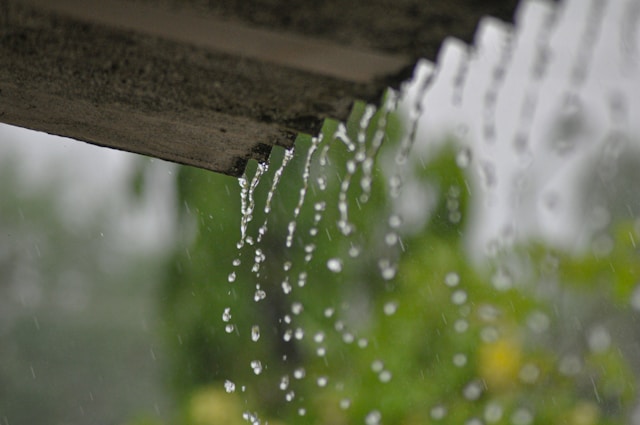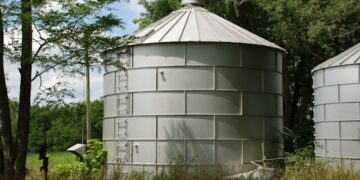As water conservation becomes increasingly important, more homeowners are turning to sustainable practices to reduce their environmental footprint. One of the simplest and most effective ways to save water and lower your utility bills is by setting up a DIY rainwater collection system. Not only is it eco-friendly, but it’s also a rewarding project that can provide a consistent water source for gardening, outdoor cleaning, and even emergency use.
With just a few materials and a weekend’s worth of work, you can collect rainwater at home and take a meaningful step toward smarter water usage. Here’s how to get started.
Why Collect Rainwater?
Rainwater harvesting is the process of collecting and storing rainwater for later use. While this practice has been around for centuries, it’s gaining new popularity among modern homeowners who want to practice home water conservation and become more self-sufficient.
By installing a rainwater harvesting system, you can:
-
Reduce reliance on municipal water
-
Lower your monthly water bills
-
Provide chemical-free water for plants and gardens
-
Prepare for droughts or emergency water needs
-
Help reduce stormwater runoff that can lead to erosion and flooding
In many cases, a simple setup like a rain barrel is all you need to start reaping these benefits.
How Rainwater Harvesting Works
To understand how a rainwater collection system works, it’s helpful to know its basic components:
-
Catchment Area – Typically your home’s roof, which collects rainfall.
-
Gutters and Downspouts – These direct water from the roof to a storage container.
-
Storage Tank or Barrel – A container that stores the collected rainwater.
-
First-Flush Diverter or Screen – Optional, but recommended to filter out debris and contaminants.
-
Outlet or Spigot – Allows access to the stored water for irrigation or other uses.
Depending on your needs and budget, your system can be as simple or as sophisticated as you’d like.
DIY Rainwater Collection System Options
There are several ways to build a rainwater harvesting system for your home, from basic to more advanced. Here are the most common DIY options:
Basic Rain Barrel Setup
This is the most beginner-friendly option and perfect for small-scale use, like watering your garden. A rain barrel is placed under a downspout to collect rainwater as it flows off your roof. You can build a rain barrel using a food-grade plastic drum, a spigot, a hose bib, and a mesh screen to keep debris and insects out.
Intermediate System with Filtration and Overflow
This setup includes one or more barrels or tanks, connected with piping and equipped with first-flush diverters and filtration systems. It helps remove the first runoff from the roof, which typically contains the most dirt and contaminants. An overflow valve ensures excess water is safely redirected during heavy rain.
Larger or Underground Systems
If you’re looking to collect significant volumes of rainwater for extensive irrigation or household use, you can install larger above-ground tanks or even underground cisterns. These systems are more complex, often involving pumps and advanced filtration, but they provide higher storage capacity and versatility.
How to Build a DIY Rainwater Collection System
Setting up a basic system doesn’t require special skills or expensive materials. Here’s a step-by-step guide to help you build a rain barrel system from scratch:
1. Choose the Right Location
Pick a spot under a downspout that gets consistent rainfall runoff. The area should be level and near your garden or where you plan to use the water. Ensure the barrel sits on a sturdy, elevated platform (like concrete blocks) for easier access to the spigot.
2. Gather Materials and Tools
You’ll need:
-
A 50–60-gallon food-grade barrel or plastic drum
-
A spigot and hose bib
-
A drill and hole saw attachment
-
Mesh screen or fine netting
-
Silicone sealant or waterproof caulk
-
Gutter diverter (optional but helpful)
-
Overflow hose or valve
3. Modify the Barrel
-
Drill a hole near the bottom of the barrel for the spigot.
-
Insert the spigot tightly, using silicone to seal it against leaks.
-
Drill a second hole at the top for overflow and attach a hose or pipe to direct excess water away from your home.
-
Cut an opening on the lid or top side of the barrel for water to enter. Secure a mesh screen over it to keep out leaves, insects, and debris.
4. Connect to the Downspout
-
Either cut your downspout to redirect water directly into the barrel or use a downspout diverter kit to channel water when it rains.
-
Position the barrel under the flow to ensure maximum capture.
5. Test and Seal
Once everything is connected, do a test run by pouring water into the gutter or spraying the roof. Check for leaks, ensure the flow path works, and make adjustments as needed.
Maintenance and Safety Tips
To keep your rainwater collection system working efficiently and safely:
-
Clean the screen and gutters regularly to prevent clogs
-
Empty the barrel before winter in freezing climates to avoid cracking
-
Use mosquito-proof screens to prevent breeding
-
Never drink collected rainwater without proper purification
-
Use the water for plants, washing cars, or flushing toilets to stay safe and eco-friendly
Know the Legal Side
Before you build a rain barrel, check your local regulations. In some regions, especially in the U.S., there are laws governing rainwater harvesting due to water rights or runoff concerns. Most places now encourage home water conservation, but it’s always good to be sure.
Conclusion
Creating your own DIY rainwater collection system is a simple yet powerful way to conserve water, reduce costs, and embrace sustainable living. Whether you choose a basic rain barrel or a more advanced setup, harvesting rainwater can make a real difference in your home and community.









